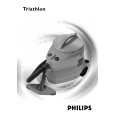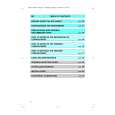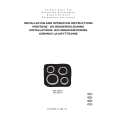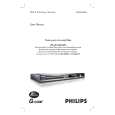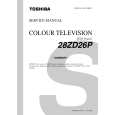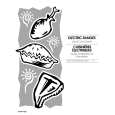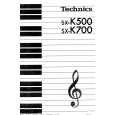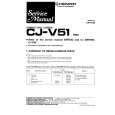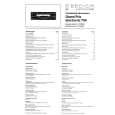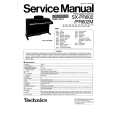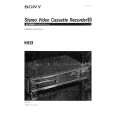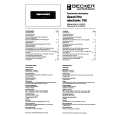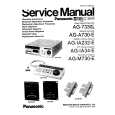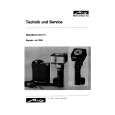|
|
|
Productos
|
|
Información
|
|
Destacado
|
|
|
 |
|
|
No hay comentarios de productos.
1. SAFETY INSTRUCTIONS GENERAL GUIDELINES 1. It is advised to insert an isolation transformer in the AC supply before servicing a hot chassis. 2. Potentials as high as 33KV are present when this receiver is in operation. Operation of the receiver without the rear cover involves the danger of a shock hazard from the receiver power supply. Servicing should not be attempted by any one who is not competent with the precautions necessary when working on the high voltage equipment. Always discharge the anode of the tube. 3. When servicing observe the original lead dress in the high voltage circuits. If a short circuit is found, replace all the parts which have been overheated or damaged by the short circuit. 4. Always use the manufacturer�s replacement safety components. The critical safety components marked with on the schematics diagrams should not be replaced by other substitutes. Other substitute may create the electrical shock, fire or other hazards. Take attention to replace the spacers with the originals. Furthermore where a short circuit has occurred, replace those components that indicate evidence of overheating. 5. After servicing, see that all the protective devices such as insulation barriers, insulation papers, shields and isolation combinations are correctly installed. R-C
. the receiver, such as screw heads, aerials, connectors, control shafts etc. When the exposed metallic part a return path to the chassis the reading should be between 4Mohm and the 20Mohm. When the exposed metal does not have a return path to the chassis, the reading must be infinite. LEAKAGE CURRENT HOT CHECK 1. Plug the AC cord directly in to the AC outlet. Do not use an isolation transformer for this check. 2. Connect a 2Kohm 10W resistor in series with an exposed metallic part on the receiver and an earth, such as a water pipe. 3. Use an AC voltmeter with high impedance to measure the potential across the resistor. 4. Check each exposed metallic part and check the voltage at the each point. 5. Reverse the AC plug at the outlet and repeat each of the above measurements. 6. The potential at the any point should not exceed 1.4 Vrms. In case a measurement is outside the limits specified, there is the possibility of a shock hazard, and the receiver should be repaired and rechecked before it is returned to the customer.
HOT CHECK CIRCUIT AC-Voltmeter
TO INSTRUMENTS EXPOSED METALLIC PARTS
Water pipe (earth)
6. When the receiver is not being used for a long time of period of time, unplug the power cord from the AC outlet. 7. After servicing make the following leakage current checks to prevent the customer from being exposed to shock hazard. LEAKAGE CURRENT COLD CHECK 1. Unplug the AC cord and connect a jumper between the two prongs of the plug. 2. Turn the receiver�s power switch on. 3. Measure the resistance value with an ohmmeter, between the jumpered AC plug and each exposed metallic cabinet part on
2 K Ohm
Figure 1 X-RAY RADIATION WARNING The primary source of X-ray radiation in this receiver is the picture tube. The chassis is specially constructed to limit X-ray radiation. For continued Xray radiation protection, replace the tube with the same type of the original one. CAUTION AFTER REMOVAL OF THE ANODE CAP, DISCHARGE THE ANODE OF THE PICTURE TUBE AND THE ANODE CAP TO THE METAL CHASSIS, CRT SHIELD, OR THE CARBON PAINTED ON THE CRT WITH A HIGH VOLTAGE PROBE
2
|
|
 |
> |
|
